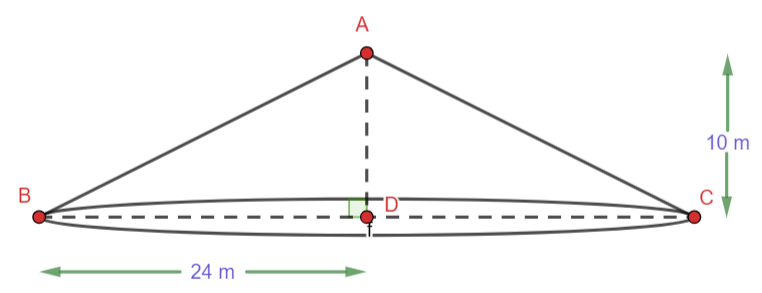Class 9 Maths Exercise 11.1 – Surface Areas and Volumes Solutions
NCERT Solutions for Class 9 Maths Chapter 11 Exercise 11.1 Surface Areas and Volumes
FAQs on NCERT Solutions for Class 9 Maths Chapter 11 Exercise 11.1 Surface Areas and Volumes
1. Where can I find accurate solutions for Class 9 Maths Chapter 11 Exercise 11.1?
NCERT Solutions for Class 9 Maths Chapter 11 Exercise 11.1 are available on Vedantu. These expert-verified solutions provide step-by-step guidance for every question, helping you understand concepts clearly. The solutions are aligned with the latest syllabus.
2. What is the main topic covered in Class 9 Maths Exercise 11.1?
Exercise 11.1 of Surface Areas and Volumes primarily focuses on the right circular cone. It includes problems on calculating its curved surface area (CSA) and total surface area (TSA) using the given radius, height, and slant height.
3. What is the formula for the curved surface area (CSA) of a cone?
The formula for the curved surface area (CSA) of a cone is πrl, where 'r' is the radius of the circular base and 'l' is the slant height of the cone. This is a key formula for solving problems in this exercise.
4. What is the TSA formula for a cone in Class 9?
The Total Surface Area (TSA) of a cone is the sum of its curved surface area (πrl) and the area of its circular base (πr²). The consolidated formula is TSA = πr(l + r).
5. How do you find the slant height of a cone if it's not given?
The slant height (l) of a cone is calculated using the Pythagorean theorem. It forms a right-angled triangle with the height (h) and radius (r). The formula is l = √(r² + h²).
6. How many exercises are there in Surface Area and Volume Class 9?
According to the rationalised 2024-25 NCERT syllabus, the Class 9 Maths chapter on Surface Areas and Volumes has four exercises. These exercises cover the surface area and volume of cones, spheres, hemispheres, and cylinders.
7. Why are the NCERT Solutions for Class 9 Surface Areas and Volumes Exercise 11.1 important?
These solutions help students verify their answers and understand the correct method for applying formulas. They break down complex problems into simple, manageable steps, which builds confidence and ensures a thorough understanding of the concepts related to cones.
8. Which is the hardest chapter in Class 9 Maths?
Difficulty is subjective, but students often find chapters like 'Circles' or 'Surface Areas and Volumes' challenging due to the numerous theorems and formulas. Consistent practice with reliable solutions makes these chapters easier to master.
9. What is the difference between the curved surface area and total surface area of a cone?
The Curved Surface Area (CSA) is the area of the cone's slanted surface only. The Total Surface Area (TSA) includes the CSA plus the area of its flat, circular base. TSA always has a greater value than CSA.
10. Can I download the Class 9 Maths Chapter 11 Exercise 11.1 solutions?
Yes, you can download a Free PDF of the Class 9 Maths Chapter 11 Exercise 11.1 solutions from the Vedantu website. This allows for easy offline access, enabling you to study and revise anytime, anywhere without an internet connection.














 Watch Video
Watch Video


















